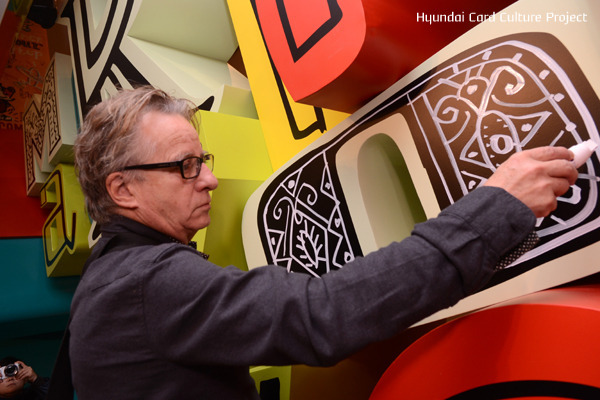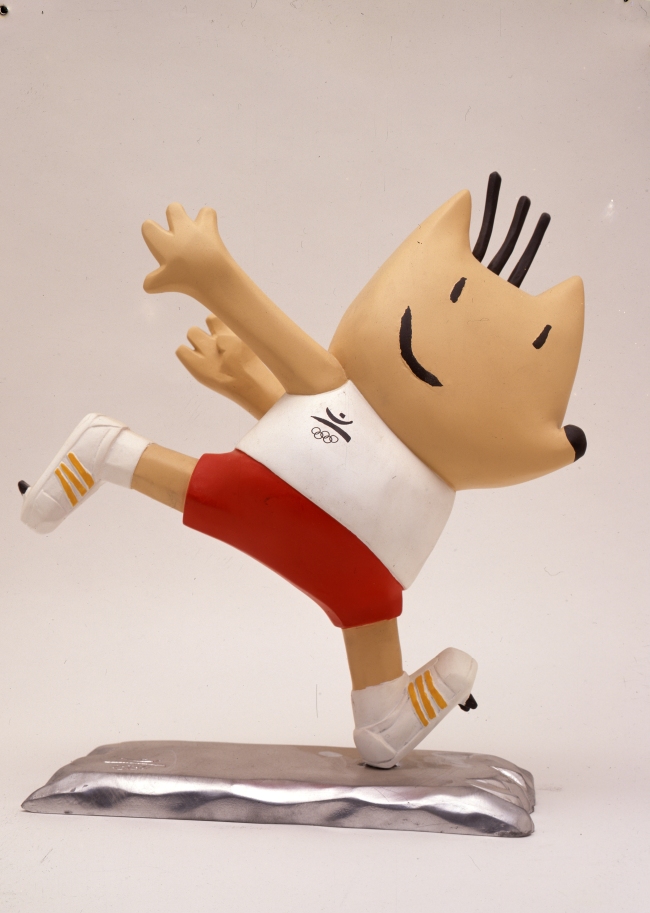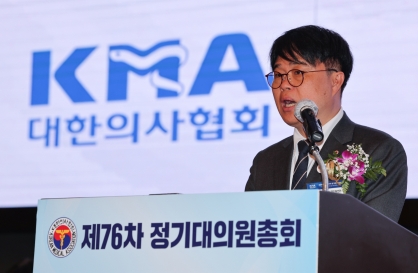Overcoming obstacles to expression
‘The Art Player’ reflects the iconic Spanish artist’s emphasis of ‘play’
By Korea HeraldPublished : Dec. 10, 2013 - 19:39

Iconic Spanish artist Javier Mariscal’s works are eye-catching ― the bright, bold colors and strokes are loud and lively, demanding attention. Unbeknownst to many, however, the artist suffers from dyslexia, a condition he has had since childhood that makes reading difficult among other things.
“When you are a dyslexic child, you don’t understand why others read very well, while you understand nothing,” he said at a press conference for the opening of his exhibition “The Art Player” held in Hangaram Art Museum in Seoul Arts Center on Friday.
Although he regularly struggles with remembering words, reading and writing, Mariscal says it is his dyslexia that helped him expand the horizon of his imagination. Through his free-flowing imagination he is not only able to have fun, but freely express himself through art.
“I try to communicate with art ― it’s so important for society, for humans. Art is very abstract communication, but we need it. We need it to understand why we are here, and why we must fight to make a better world,” he said.
“The Art Player” is the 13th installment of Hyundai Card’s ongoing Culture Project through which many artists in different fields have shared and displayed their talents. A total of 1,200 pieces make up the expansive exhibition, which is divided into three areas: Sketches Room, Collage Landscape and Colors Parade.
Not only will visitors be able to view bold, colorful pieces, but also experience art with their bodies, especially younger children. For Mariscal, maintaining a child-like curiosity and sense of “play” is very important.
“[Children] are so special. They are very intelligent and elegant and have a wonderful, universal, and sophisticated language with their heart and feelings,” he said, adding, “They understand so quickly; the movements, the concepts in a space.”

Born in 1950 in Valencia, Spain, Mariscal studied design at the Elisava School in Barcelona, only to leave soon after to have the freedom to follow his own creative impulses. In 1971, he created the character Mr. Cabalito, inserting him into various comic strips. In 1992, the artist gained international recognition for designing the official Barcelona Olympics mascot, Cobi. He then went on to design furniture, landscapes and interiors such as his collaboration with worldwide clothing store H&M’s branch in Barcelona, Spain.
In 2010, Mariscal drew and co-directed the film “Chico and Rita” with renowned Oscar-winning director Fernando Trueba. The film is set against the backdrop of colorful Cuba, cities in the United States and France, and depicts a passionate love story between a Cuban pianist and a singer. The film gained rave reviews, earning itself a nomination for “Best Animated Film” from the Oscars.
“You’re working with sound, pigments, stories, voices of actors and music, and the audience is in a dark room with a big screen. For an artist, it’s a dream, a fantastic dream,” the artist said when asked about how it felt to work on the film.
Mariscal has worked as an artist for more than four decades, but he never plans to stop being imaginative, and most importantly, to stop playing.
In 2010, Mariscal drew and co-directed the film “Chico and Rita” with renowned Oscar-winning director Fernando Trueba. The film is set against the backdrop of colorful Cuba, cities in the United States and France, and depicts a passionate love story between a Cuban pianist and a singer. The film gained rave reviews, earning itself a nomination for “Best Animated Film” from the Oscars.
“You’re working with sound, pigments, stories, voices of actors and music, and the audience is in a dark room with a big screen. For an artist, it’s a dream, a fantastic dream,” the artist said when asked about how it felt to work on the film.
Mariscal has worked as an artist for more than four decades, but he never plans to stop being imaginative, and most importantly, to stop playing.

“People expect you to be serious after you are an adult. Well, I don’t believe that. We will play all the time, because that is what I believe.”
Mariscal’s works will be on display in Hangaram Art Museum at Seoul Arts Museum from Dec. 7 to March 16. Tickets are priced at 12,000 won for adults and 8,000 won to 10,000 won for children depending on age.
By Cha Yo-rim (yorimcha@heraldcorp.com)
Mariscal’s works will be on display in Hangaram Art Museum at Seoul Arts Museum from Dec. 7 to March 16. Tickets are priced at 12,000 won for adults and 8,000 won to 10,000 won for children depending on age.
By Cha Yo-rim (yorimcha@heraldcorp.com)
-
Articles by Korea Herald




![[Weekender] How DDP emerged as an icon of Seoul](http://res.heraldm.com/phpwas/restmb_idxmake.php?idx=644&simg=/content/image/2024/04/25/20240425050915_0.jpg&u=)



![[Music in drama] An ode to childhood trauma](http://res.heraldm.com/phpwas/restmb_idxmake.php?idx=644&simg=/content/image/2024/04/25/20240425050929_0.jpg&u=)









![[Herald Interview] Mistakes turn into blessings in street performance, director says](http://res.heraldm.com/phpwas/restmb_idxmake.php?idx=652&simg=/content/image/2024/04/28/20240428050150_0.jpg&u=20240428174656)
